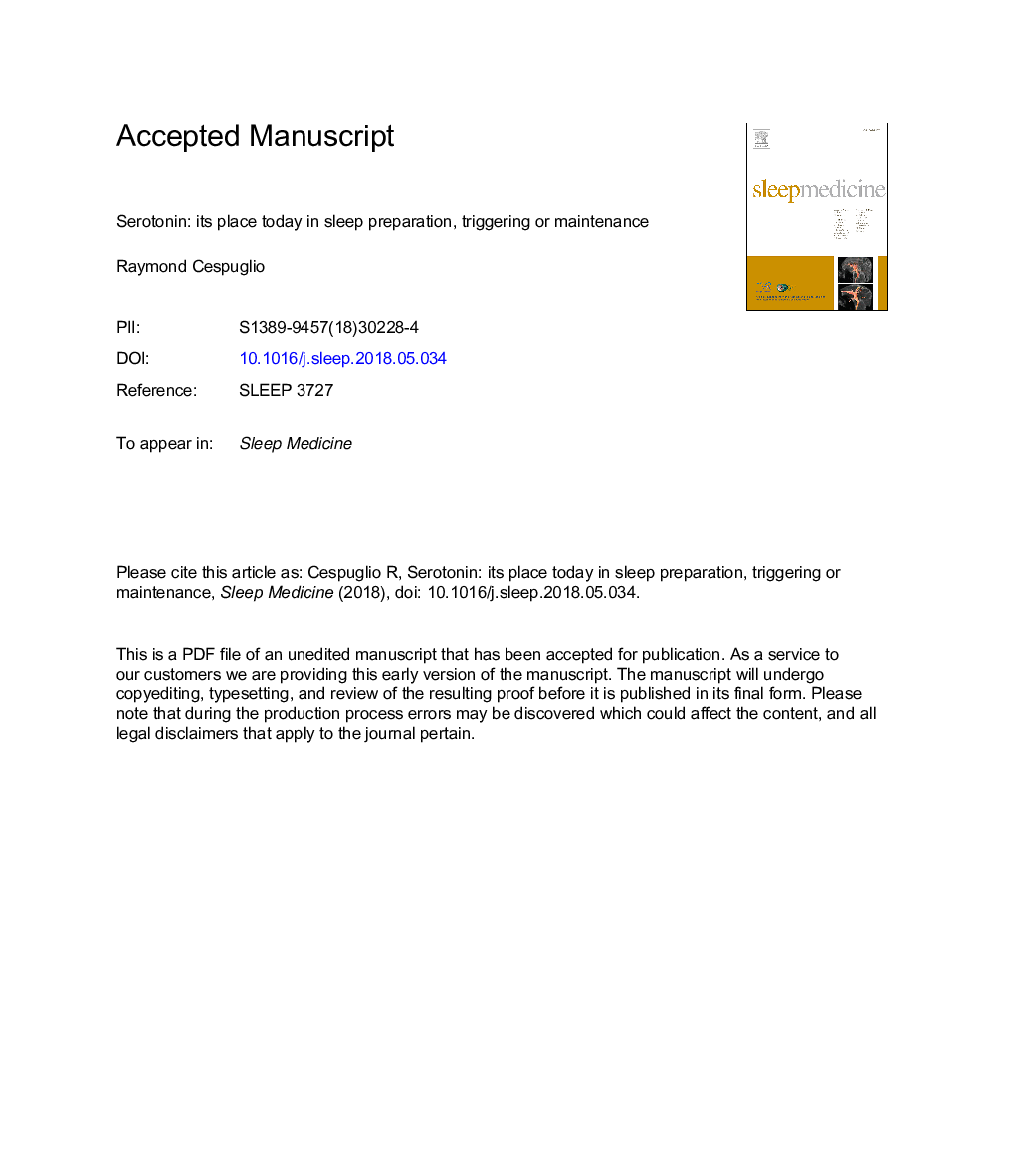| Article ID | Journal | Published Year | Pages | File Type |
|---|---|---|---|---|
| 10216384 | Sleep Medicine | 2018 | 23 Pages |
Abstract
Serotonin (5-HT) is involved in sleep in two different ways. First, when released during waking by the axonal nerve endings, it influences the synthesis of hypnogenic substances in specific brain targets. Such a synthesis might be in keeping with the waking qualitative aspects. As an example, the hypnogenic CLIP peptide (ACTH18-39) is synthesized when stressful events occur during wakefulness. Second, when released during sleep within the nucleus raphe dorsalis (nRD) by dendrites of 5-HT neurons, it contributes to 5-HT perikarya silencing through an auto-inhibitory process. Nitric oxide, co-synthesized with 5-HT, may act in synergy with this amine at both mentioned levels. Regarding the triggered hypnogenic substances, they induce sleep through acting on two components within the nRD: (1) the 5-HT component; its silencing is necessary to remove the gating effect exerted on phasic sleep events (ponto-geniculo-occipital, PGO, waves); (2) a substance P component; its silencing is necessary, at least, to alleviate the tonic influence exerted on somatic muscles. These two components may constitute the brain “sleep switch-on” mechanism allowing wake/sleep alternation. Pharmacological procedures influencing this switch may be determinant for treating insomniac patients. Serotonin appears thus to be involved in sleep preparation, triggering and maintenance.
Keywords
Related Topics
Life Sciences
Neuroscience
Neurology
Authors
Raymond Cespuglio,
